De geldmaat
For this project, we had to design a product that provided a solution to a complex problem. While displays can be a part of the solution, the focus of this project is very much on the interaction with computers and sensors that are incorporated into everyday objects and the environment around us. The design is research-based.
Debrief
The assignment is to design an interactive product that resolves irritations within a household. A project about irritations within a corporal student house that arise from open payment requests. These payment requests arise from advancing costs that the student body makes together and therefore must be paid together.We have looked together at how we can remove this irritation through a beautiful product. Our choices will be be substantiated by means of various methods and images and a piece of research. Discover in this report how we came to this wonderful product. Behold: Money Measure.
We have chosen to focus on students who live together and often have to share various costs such as rent, electricity, groceries etc. Often someone has to pay in advance because others do not have enough money in their pocket. We want to come up with a solution that would encourage and improve this problem.
Target Audience (doelgroep)
Our target audience is a corporately owned student body who have a shared housekeeping pot and experience irritations as a result. We have chosen because we have done research and quite quite a lot of very recognizable situations. We also found our current idea recognizable but less obvious so that we we really have to do good research for results. And really have to come up with our own come up with and not be distracted by good existing ideas.
Design Challenge
Main question:
What is a good way to increase the motivation to pay within a corporal student house so that there are no irritations between them from unpaid payment requests that arise from the pre-payment of the common costs?
Sub-questions:
1. What motivates students to pay requests?
2. When are all roommates content with the financial situation?
3. What is the best way to communicate irritations?
Research
First, we wanted to get some background information from the target audience. So what are costs of an average student house with this get some more global information about costs and or irritations. By conducting these surveys / interviews we could get a better idea of our design challenge and what a possible solution could be.
What we gleaned from this is:
- Groceries is the #1 joint expense.
- For activities, a pot is often used to make a joint budget.
- Advancing money causes irritation later.
Then we had a survey filled out by people who live with different roommates and from this the biggest irritation was mainly non-payment of payment requests.
We then looked at existing solutions to these problems / irritations and came up with the following:
As a result, for example, household books came in which all expenses were written down and at the end of the month each pay a portion of the expenses. There are also numerous applications such as WieBetaaldWhat or Venmo. The disadvantage of these solutions is that at the end The disadvantage to these solutions is that at the end there will be a payment request anyway. We, on the other hand, have also found the solution of a household jar. This seemed to us to be a somewhat boring and unsafe solution but it is practical. You build up a budget together and all the joint expenses are made from that. Is there no payment? Then no budget and therefore no groceries.After this research, we have decided to go our product in the direction of the household jar. After this research we decided to take our product in the direction of a kind of household pot.
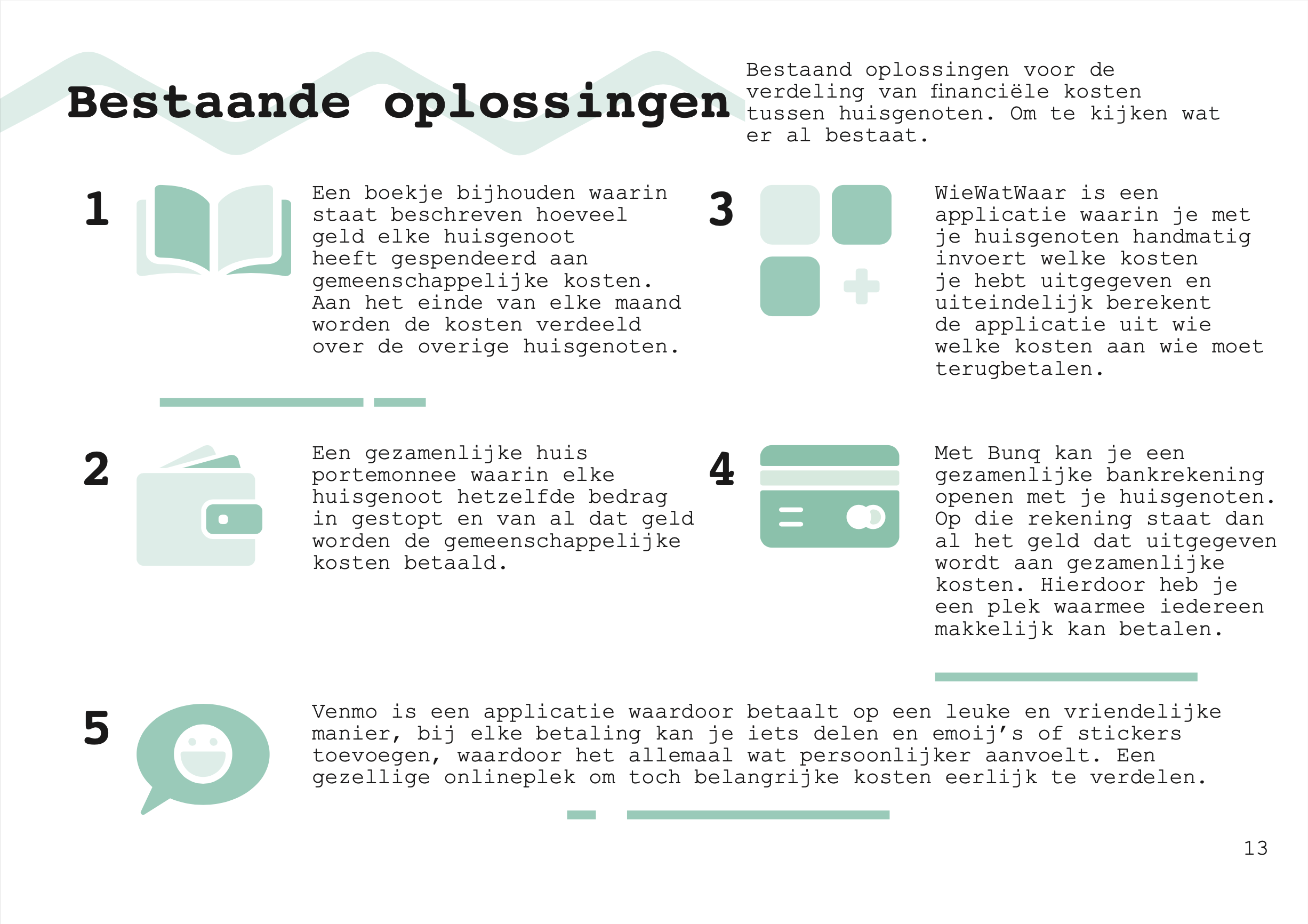
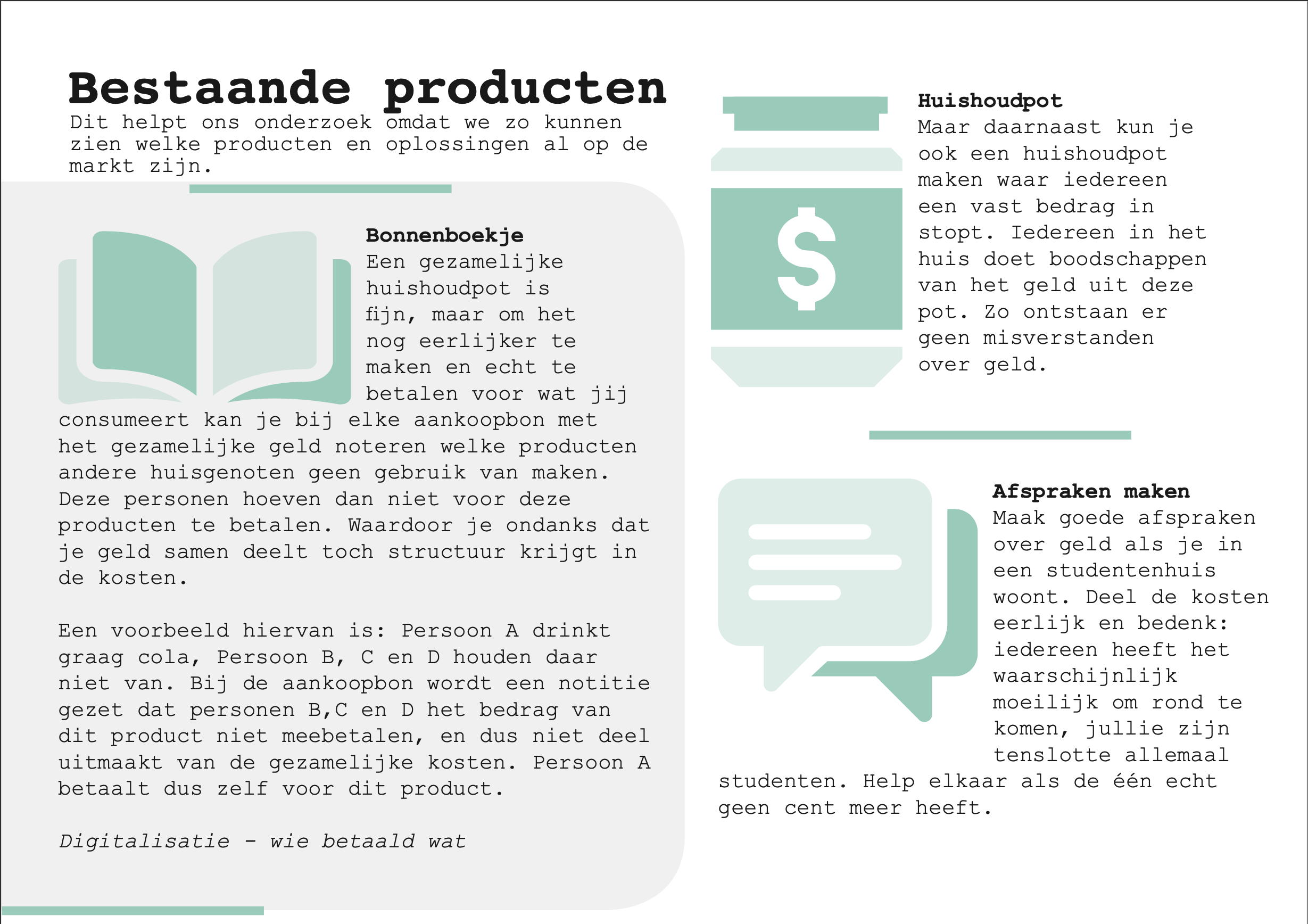
We then started looking at the context and target audience around our product. We made a context map, personas, user stories and a stakeholders map. In the end, this allowed us to draw the following conclusions:
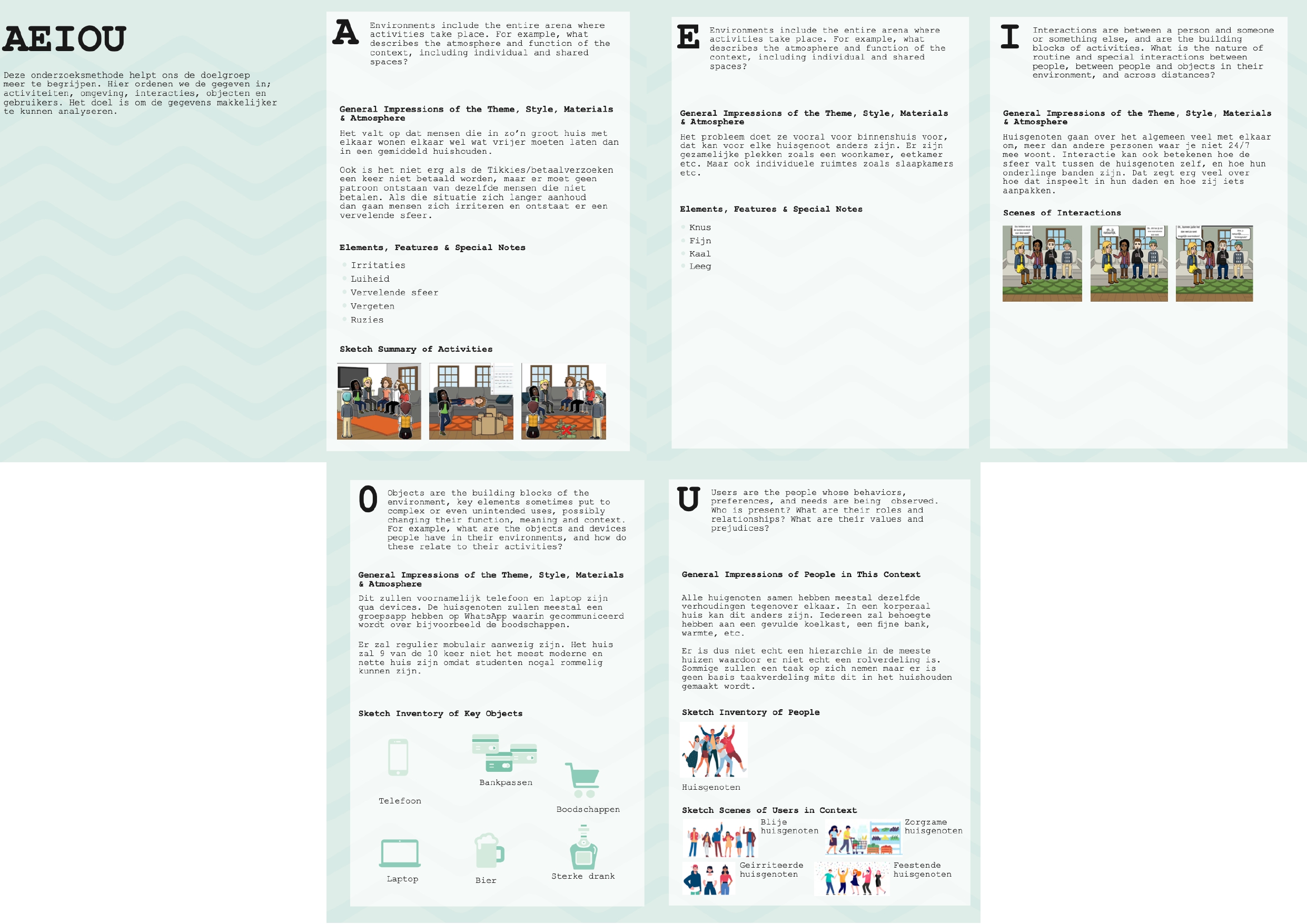
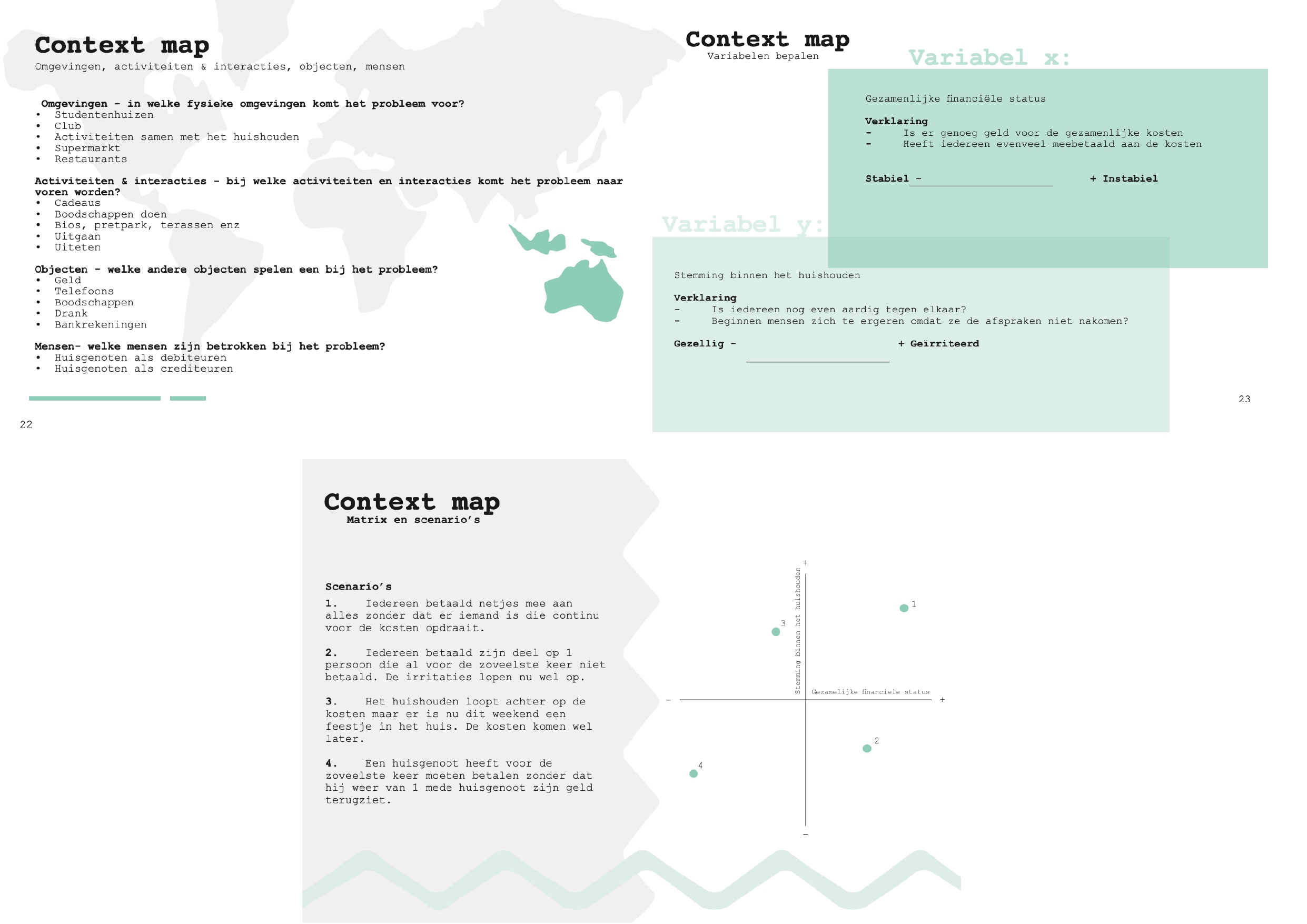
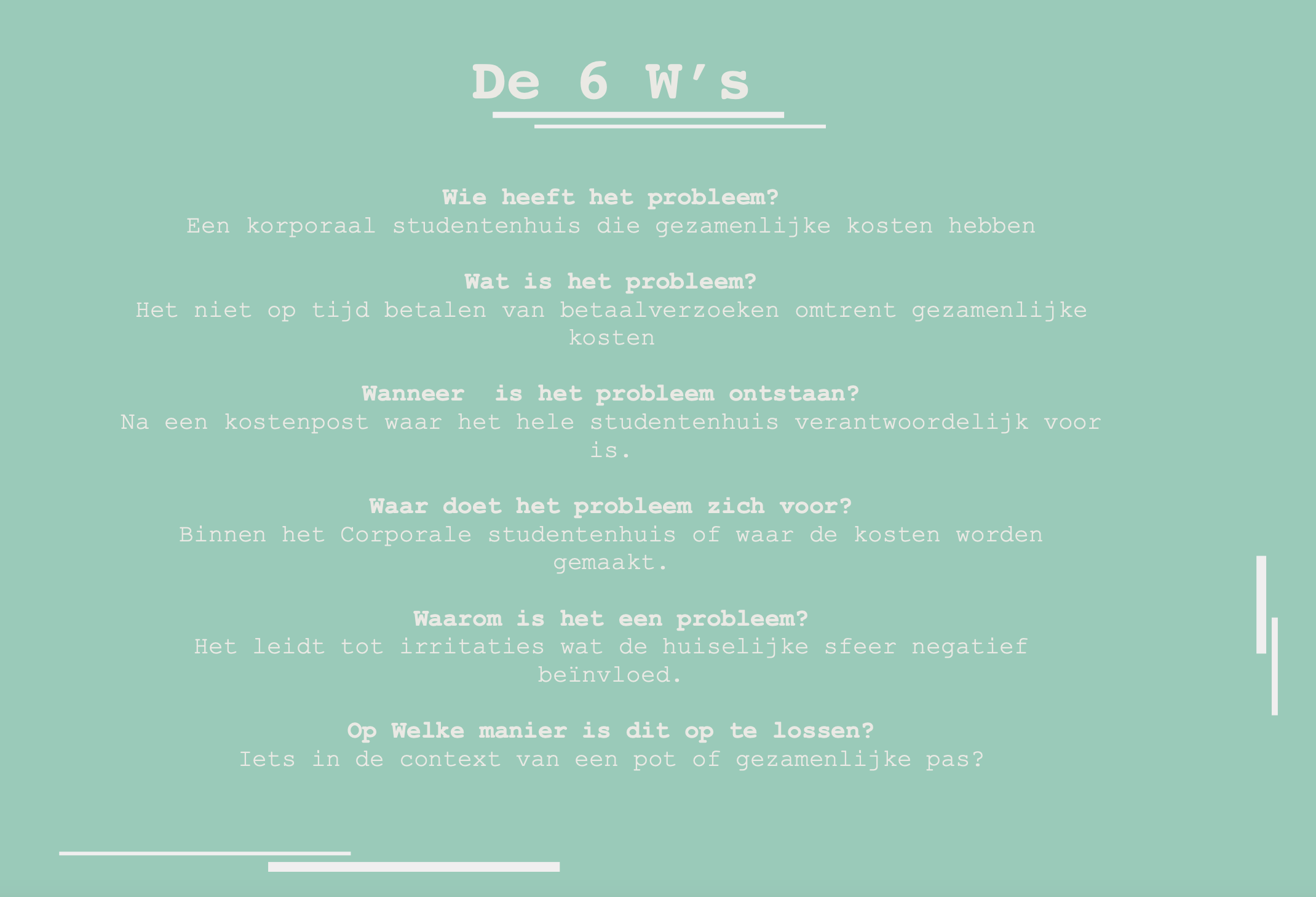
Persona's
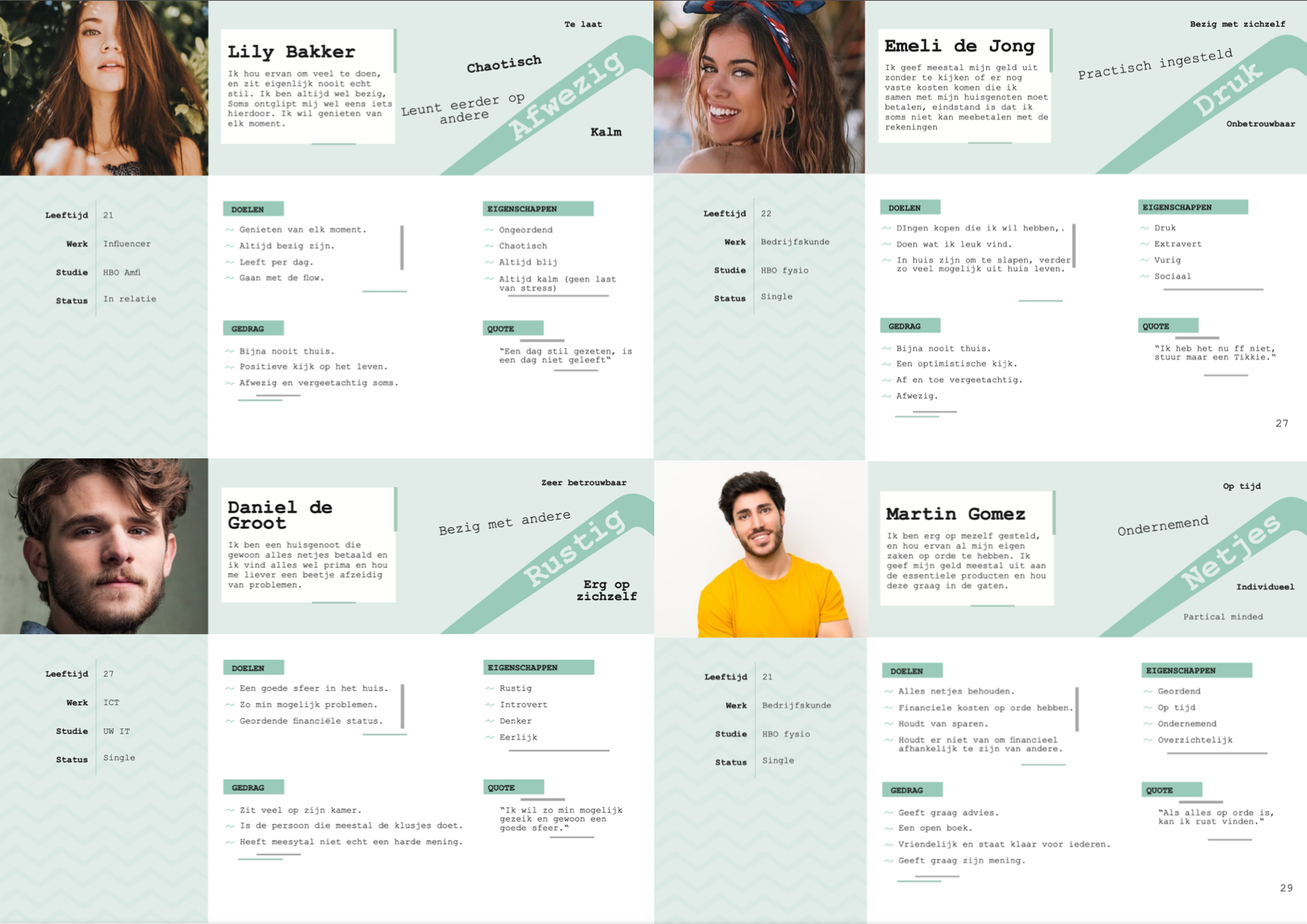
Product
There are joint costs and a budget is needed for this. All residents of the student house must pay an equal share of this budget. The amount they have to pay they put in the Geldmaat. In order to activate the Geldmaat they have to identify themselves by means of a finger scan. This also helps in the context of security. Without a correct scan, the lid of the jar also open. When the student is authorized he can choose on a screen provided with an interface for what amount he wants to add to the jar. Then he can choose whether he wants to pay cash or pin. pay. If he chooses cash, the lid comes off and he can put the money through the funnel with a scanner. with scanner. If he chooses pin he can hold his debit card against the side of the Geldmaat because it is equipped with NFC chip. After paying he gets a confirmation of this in the the interface. This interface also has a screen with a trophy overview. These These trophies can be achieved by, for example, being the 1st to add money to the budget or
completing the budget.
Through these trophies you create motivation through a healthy battle between them. The trophies work, as it were, as a reward for paying. So eventually all the housemates will want those trophies because say it yourself, who wouldn't want to score a trophy?


The storyboard we created shows how the product would work if used in real life. We also worked out two of our interfaces and finally chose the screen.
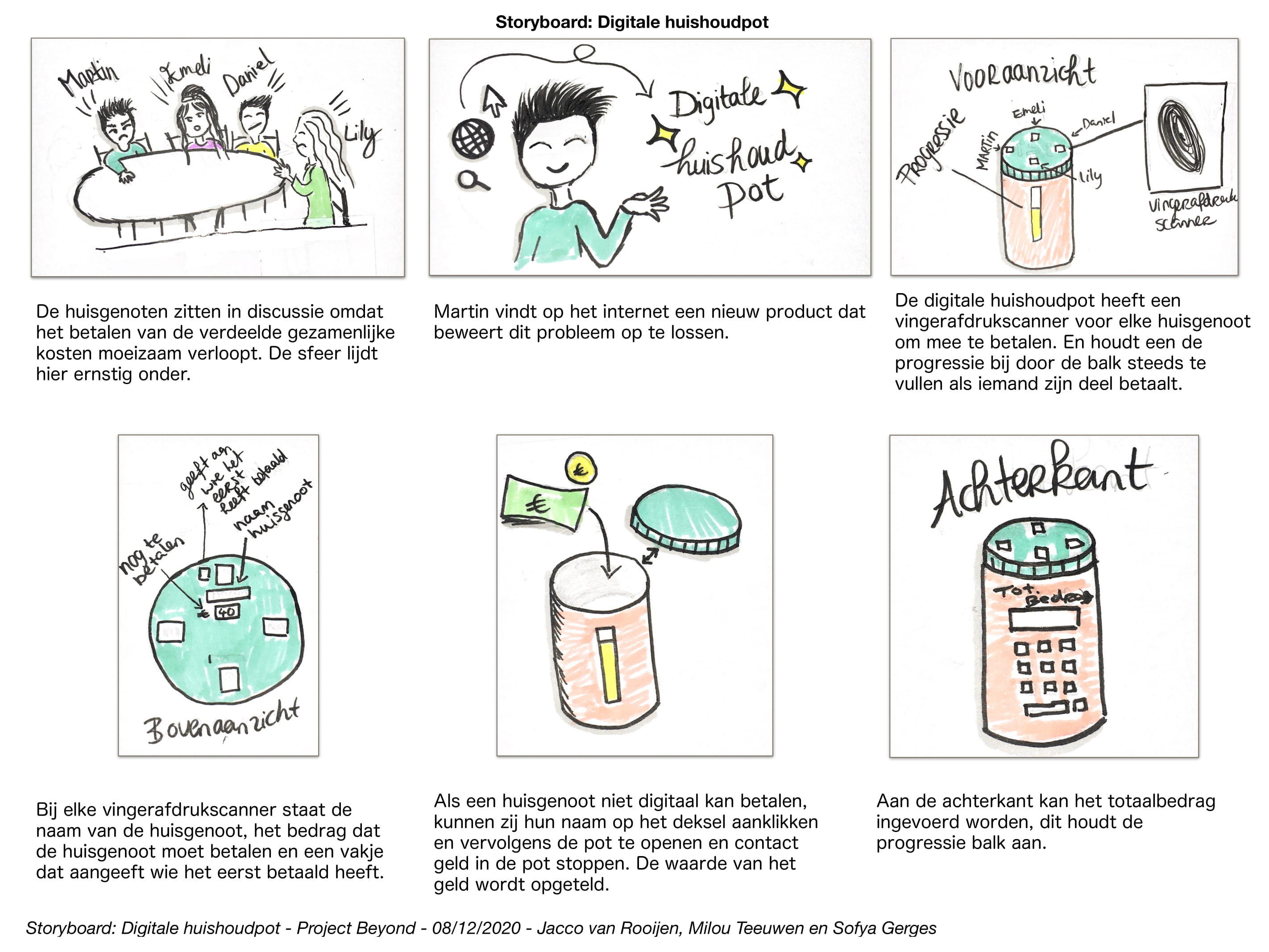
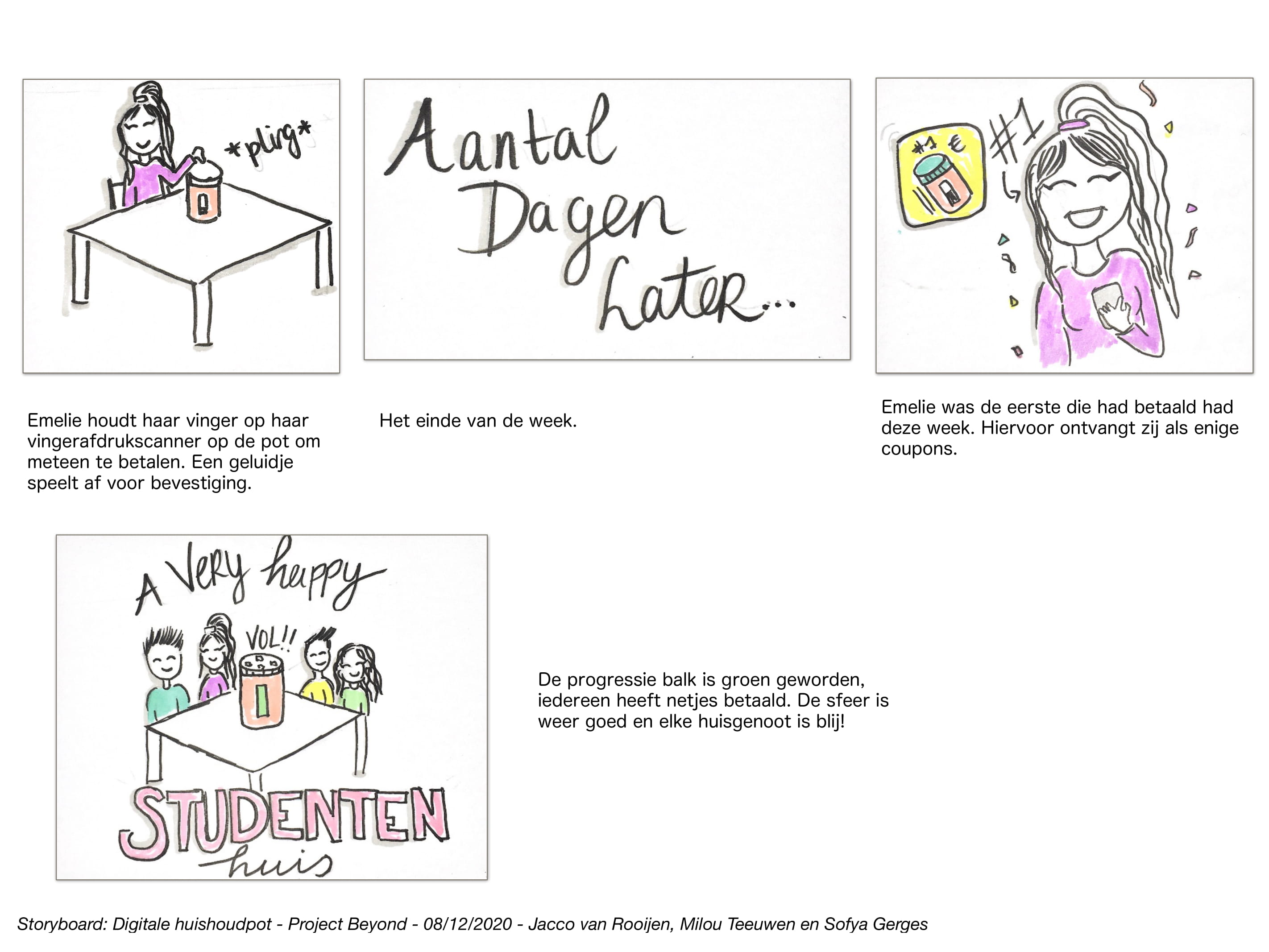
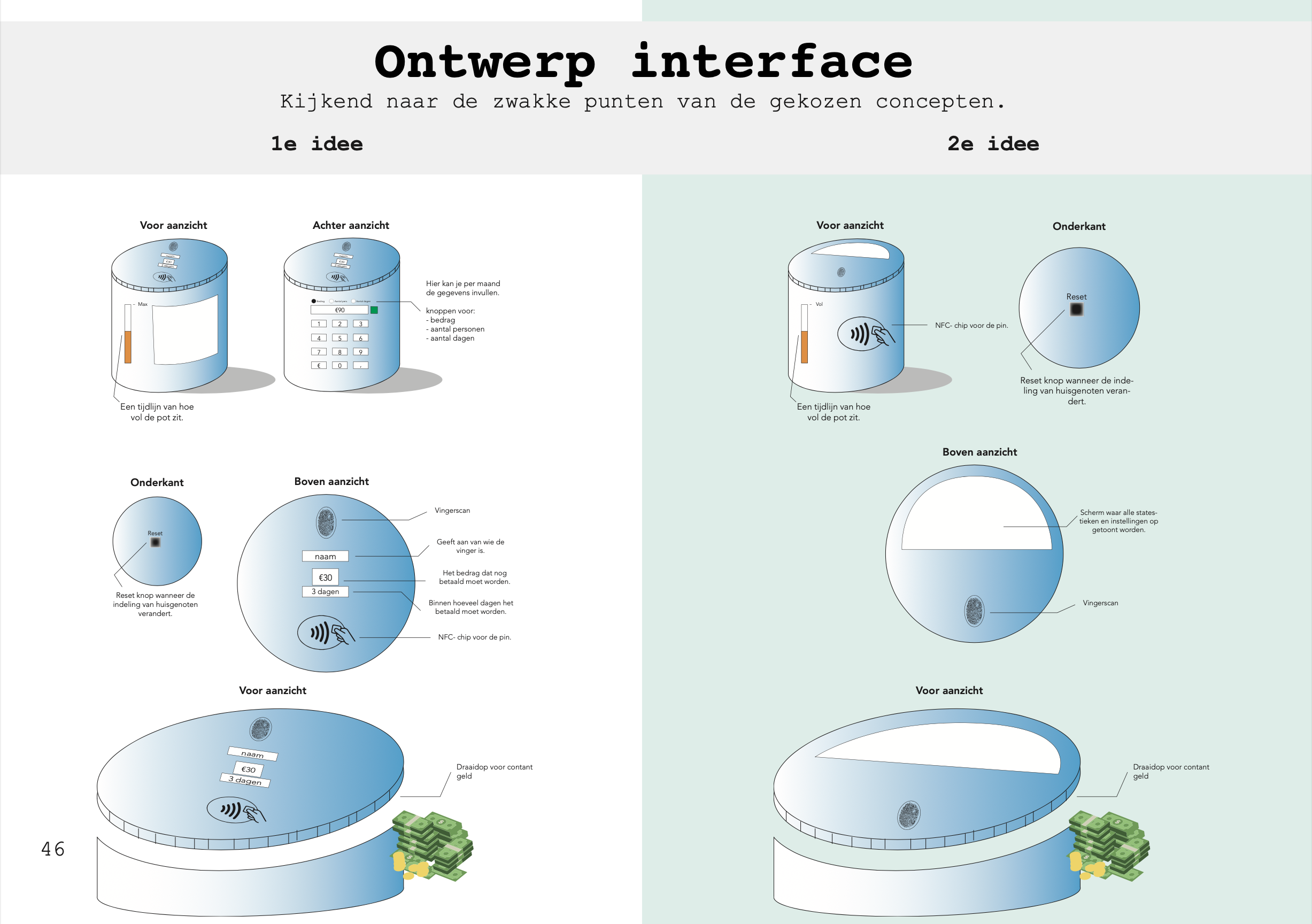
The product features a screen with built-in interface, an NFC chip a loading bar that shows the progression of fill.
Furthermore, we have thought about the different states (microinteractions). Blank state, error state and partical state.
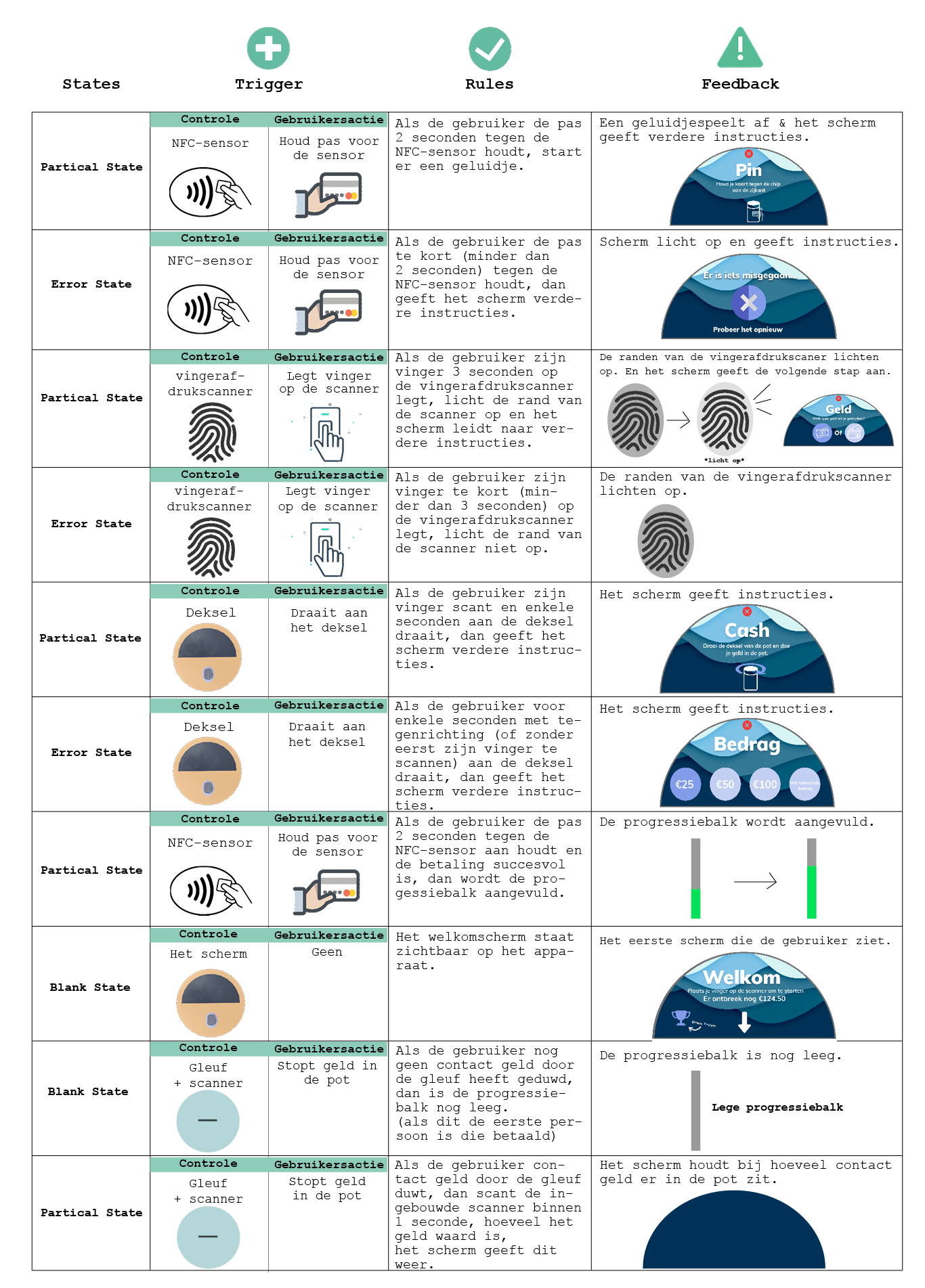
3D design & Result
In vectary, we created a 3D design of our household jar. This was one of the first times I have made a 3D design. Move your mouse below to admire the design from all angles.